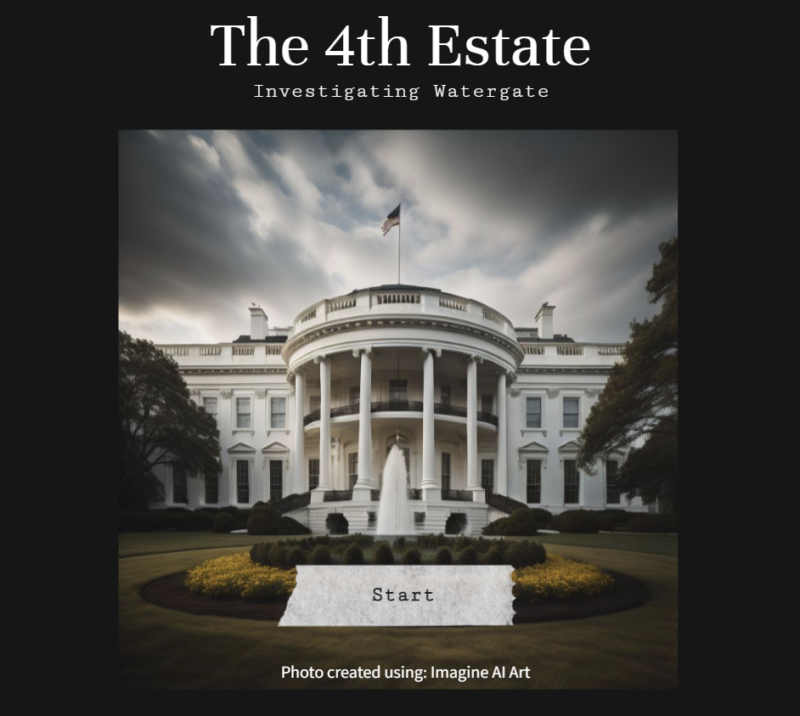Editor’s note: This story is part of a series of articles produced by students taking NYU’s Media Law and Ethics class with a focus on generative artificial intelligence. Students were challenged to come up with novel uses for AI to advance the field of journalism.
The advent of Artificial Intelligence (AI) into our society has proven its multifaceted benefits and capabilities. OpenAI, in particular, has showcased its potential through accessible formats like ChatGPT, enabling people from diverse backgrounds to experience AI’s prowess. Last semester, our New York University’s (NYU) Media, Law, and Ethics class a part of the American Journalism Online Master’s program embarked on a journey to explore the integration of AI into journalistic pursuits, pondering how AI’s wholehearted embrace could enhance such endeavors.
This exploration led me to conceive the AI application Let Us Find Out (LUFO) — a sophisticated AI chatbot seamlessly integrated into news and educational websites, functioning as a comprehensive search engine.
Objectives and expectations:
Designed for students ages 11 to 18, LUFO aims to elevate the reading experience by engaging students with the chatbot as a tool to enhance comprehension and learning from the materials. LUFO achieves this by:
- facilitating the resolution of queries regarding article information, offering clarity tailored to individual students.
- providing contextual insights into related topics within the text, supplemented by visual aids and verbal elucidations.
- enhancing student concentration and focus on assignments.
Picture this scenario: A history teacher in a Georgia middle school assigns her students to read a community feature I wrote about the Atlanta’s Blandtown for The Click, NYU’s online, student-run news site. Next, the students are tasked with an open discussion about the content the following day.
If a student encounters unfamiliar terms or phrases or seeks deeper insight into specific locations —such as images— when reading an article or text, LUFO promptly furnishes the information needed through the chatbot all within the respective website. This eliminates the necessity of having to navigate away from the reading material or website, mitigating the risk of distractions from unrelated ads and topics.
LUFO commits to delivering precise and accurate responses to user searches within the chat box, seamlessly integrated into the website. This feature proves especially invaluable for students grappling with ADHD, dyslexia, and other learning disabilities requiring additional text clarification.
App features:
LUFO’s forthcoming features encompass:
- a chatbot residing within a corner chatbox, accessible by activating a pull-out ribbon and entering queries in the chat box or hovering over words, prompting pre-formulated questions aimed at simplifying phrases, constructing simpler sentences, or displaying images of specific locations.
- an audible feature to read search responses at adjustable speeds, catering to individual preferences.
- multi-tiered, screen-viewing options, which allow educators to limit students to the current article and students to navigate among various pages or stories on the website with a way to exit the site as desired.
Next steps for LUFO:
To realize the integration of AI into journalism and education, the creation of the AI application LUFO involves a comprehensive approach. In order for this application to flourish, the following is needed:
-
-
-
- Partnerships and resources: Collaborating with educational institutions like NYU’s American Journalism Online program, is an important step to to gain insights, potential resources, and access to educational content to pour the required resources into this product. Additionally, building a team that includes AI developers, educational experts, UX/UI designers, content creators, and journalists will ensure that the application is successful in its mission.
- Developing the LUFO AI chatbot: While we’re able to model the basic example of what LUFO can be through WordPress, choosing a suitable AI technology that can handle natural language processing (NLP), image recognition, and auditory interactions requires thorough research and help. Additionally, the AI needs to be trained on the chatbot on a diverse range of texts and articles, considering the language, tone, and style used in educational content for the respective age group. Designing a user-friendly interface for LUFO, keeping in mind the target audience (students aged 11 to 18) and their preferences. Create intuitive navigation elements, including the corner chatbox, pull-out ribbon, and word-hovering features.
- Accessibility, customization, and testing: Implementing features that cater to students with learning disabilities, such as ADHD and dyslexia, by providing text clarification and adjustable reading speeds. Conducting extensive testing of LUFO with students, teachers, and educational experts to identify usability issues and gather feedback is a point to take into consideration when planning for LUFO.
-
Ready to try LUFO for yourself? Click on the green ChatGPT icon to the right and take it for a spin.
-






